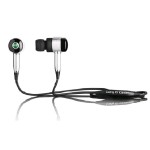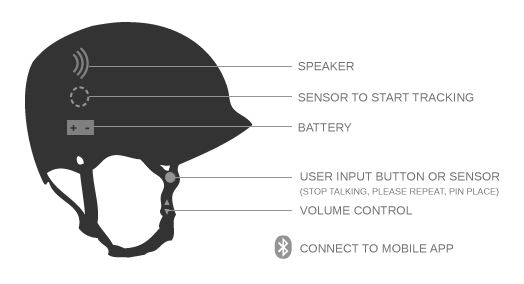Note: We will probably need to purchase a smartphone for prototyping. I’m leaning much more toward the Android, not because I’m bias to my personal phone, but because as a platform it seems much more open for hacking than the iphone.
PHYSICAL BUTTONS AND SENSORS FOR RIDER FEEDBACK
One option is to use a dev board to interface between the phone and extra components (button, force sensor, etc). This gives us room to play with various sensors that may be embedded into the helmet. Sparkfun has products that would help us with this. For example, here’s a serial modem that allows you to interface an Arduino board with the Android or iPhone through the audio jack. This car audio project, also connecting with the phone through the audio jack, demonstrates the beauty of a physical button paired with a mobile phone.
Note: Wires are required for the first two examples. I think this is okay for early prototypes, but in the end, we do want to be wireless.
An alternative route is to hack the existing button on a bluetooth headset (or audio headphones) and reprogram it to do different commands. There are several examples of people doing this type of hack to boost the volume of audio, and perhaps there would be some direct correlations for what we would need to do. This gives us less control over selecting physical components, but may be more simple.
WHAT TO DO WHEN THE BUTTON WORKS
There are a couple simple things the button could to in the beginning to test the feasibility and experience of considered features:
1. To pin places; “Remember this location (longitude and latitude)”
2. To start/stop tracking
AND FINALLY FOR TRACKING AND GEO-LOCATION SOFTWARE
To be determined…We need something simple and with an open API.
STARTING POINTS FOR ANDROID APP DEVELOPMENT
A first look at building and android app
Android development tutorial
A bit about the android location API
Another android development 101



